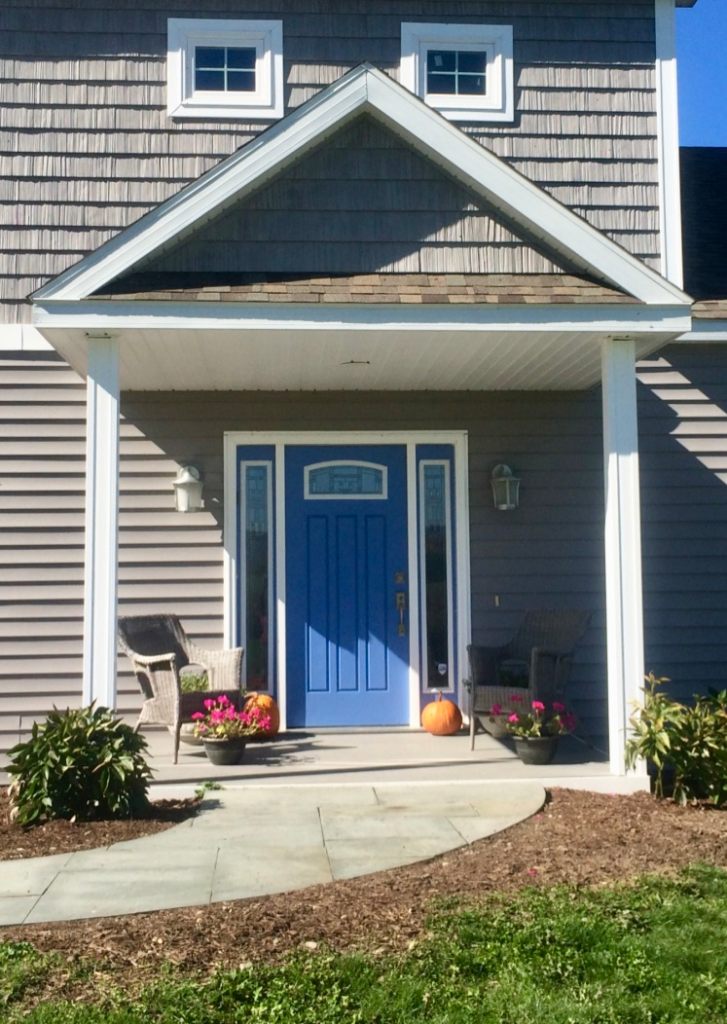Aging in place is the default for approximately 90% of older adults in the U.S. Unfortunately, our housing is not designed to make it a success. In addition to older adults and their caregivers, municipalities bear a huge burden. Poorly designed housing actually exacerbates the aging process, unnecessarily making people more dependent on caregiving and home and community based services. According to a study by Harvard’s Joint Center on Housing*, less than 1% of U.S. housing have the key features needed.

Here, I outline the 7 Essentials for Successful Aging in Place which make a home great for any one of any age. They made our home work well for everyone from toddlers to great grandmothers, enabling them to visit, or even live in the home. When it came time to sell, our house worked for a much wider range of potential buyers, because it was designed for the range of real needs of real people.
- No-step entry. Steps are problematic not just for the elderly. They’re also difficult or impossible for parents with strollers, young kids and anyone who uses a walker or wheelchair.
- A full bathroom on the first floor. And because ours has a curbless shower, my mom was able to shower with her walker and my sister-in-law could bathe her kids easily.
- Wider doors and hallways. Most interior doors are 28 or 32 inches wide, but we chose 36-inch doors. My mom’s walker fits with no problem, and we can easily carry laundry baskets or other bulky items through. Widening doorways in a retrofit can run $600 to $1,600 per doorway but may cost only $10 more per door when a house is being built.
- Reach range. Most people, standing or seated, have no trouble reaching things that are 24 to 44 inches off the floor. We used that range for our outlets, and I highly recommend it for light switches too. We also considered reach range when we put our microwave at counter height, rather than above the range. Above-the-range microwaves may save space but can be difficult for many people to reach.
- A bedroom on the first floor. An easy way to do this is to design a ‘flex space.’ Ours was the family den, and equipped with a good sofa bed it quickly became a first floor bedroom. It was used both short term and long term by people who could not use stairs to access the bedrooms on the second floor. No need to struggle to convert a dining room into a bedroom when needs change.
- Flooring. Non-slip flooring and low-pile carpeting. One of the best choices for hard flooring is luxury vinyl, as it is not too hard a landing surface. Absolutely no smooth slabs of stone or large format tiles–only if a lightly textured surface. Smaller tiles and plenty of grout improve slip resistance.
- Lighting and display. Irrespective of age, I have always been light sensitive due to a visual processing disorder. Having adjustable non-glare lighting is crucial for me. Everyone experiences changes to their vision as they age, typically noticeable and impacting their functioning by age 50. As the displays for smart lights, locks, and thermostats can be controlled by tablets or phones, enabling users to customize font size and brightness for their needs making them easier to see and to operate.
Municipalities are best positioned to change the housing stock. Poorly designed dis-abling housing costs municipalities money and frustration in trying to meet the needs of an aging population with housing that unnecessarily works against them. If you are affiliated with a municipality contact me for more information on how you can enable your citizens to retain their physical and financial independence to improve your community’s bottom line.
RESOURCE
* Joint Center for Housing Studies at Harvard University. (2016, December 13). Projections and implications for housing a growing population: Older households 2015-2035. Harvard Joint Center for Housing Studies. Retrieved from https://www.jchs.harvard.edu/research-areas/reports/projections-and-implications-housing-growing-population-older-households